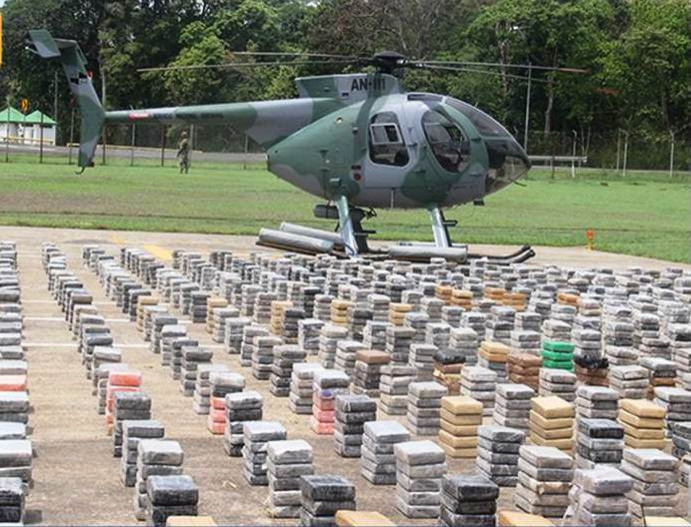$1 Billion Cocaine Seized By U.S. Customs Officials Over Memorial Day Weekend

Over the Memorial Day weekend, U.S. Customs and Border Protection, or CBP, officials were able to prevent $1 billion of cocaine from entering the U.S., seizing more than three tons from a bust off the coast of Panama.
The CBP announced the two drug busts on Wednesday. The first drug bust occurred near the Galapagos Islands, off the coast of Ecuador, on May 24. Officials from the CBP’s Office of Air and Marine P-3 air surveillance crew discovered a speedboat just north of the islands. The speedboat’s crew began dumping packages into the sea, attempted to clean the boat to remove trace evidence of cocaine and sped off to evade capture. The CBP officials were able to track the speedboat with the aid of a helicopter, and law enforcement agents were able to shoot at the boat, ultimately disabling it.
The CBP agents arrested the three crewmembers while the speedboat was sinking into the Pacific Ocean. According to the news release, the CBP believes the speedboat was carrying more than 7,000 pounds of cocaine, worth more than $500 million.
On May 25, CBP agents were able to seized more than 6,000 pounds of cocaine off the coast of Panama. Another CBP P-3 air surveillance crew working in the West Caribbean identified a fast-moving speedboat between the border of Panama and Colombia, according to the news release. The speedboat attempted to evade CBP officials by traveling along the Panama coast before being apprehended by law enforcement officials from Panama. The speedboat was carrying 100 packages of cocaine, weighing more than three tons, with an estimated value of $445 million.
The CBP was able to prevent $1 billion worth of cocaine from entering the U.S., CBP Director of National Air Security Operations in Jacksonville, Fla., Doug Garner said of the drug busts. “These two disruptions are an example of the international cooperative law enforcement effort to disrupt transnational criminal activity and deny their profiting from such activity.”
The CBP’s P-3 crews patrol the West Caribbean and Pacific Ocean in order to intercept potential drug shipments heading to the U.S. border. According to the news release, in 2012, the CBP’s P-3 crews were able to seize 117,765 pounds of cocaine, more than 59 tons, with an estimated value of $8.8 billion.
© Copyright IBTimes 2024. All rights reserved.






















